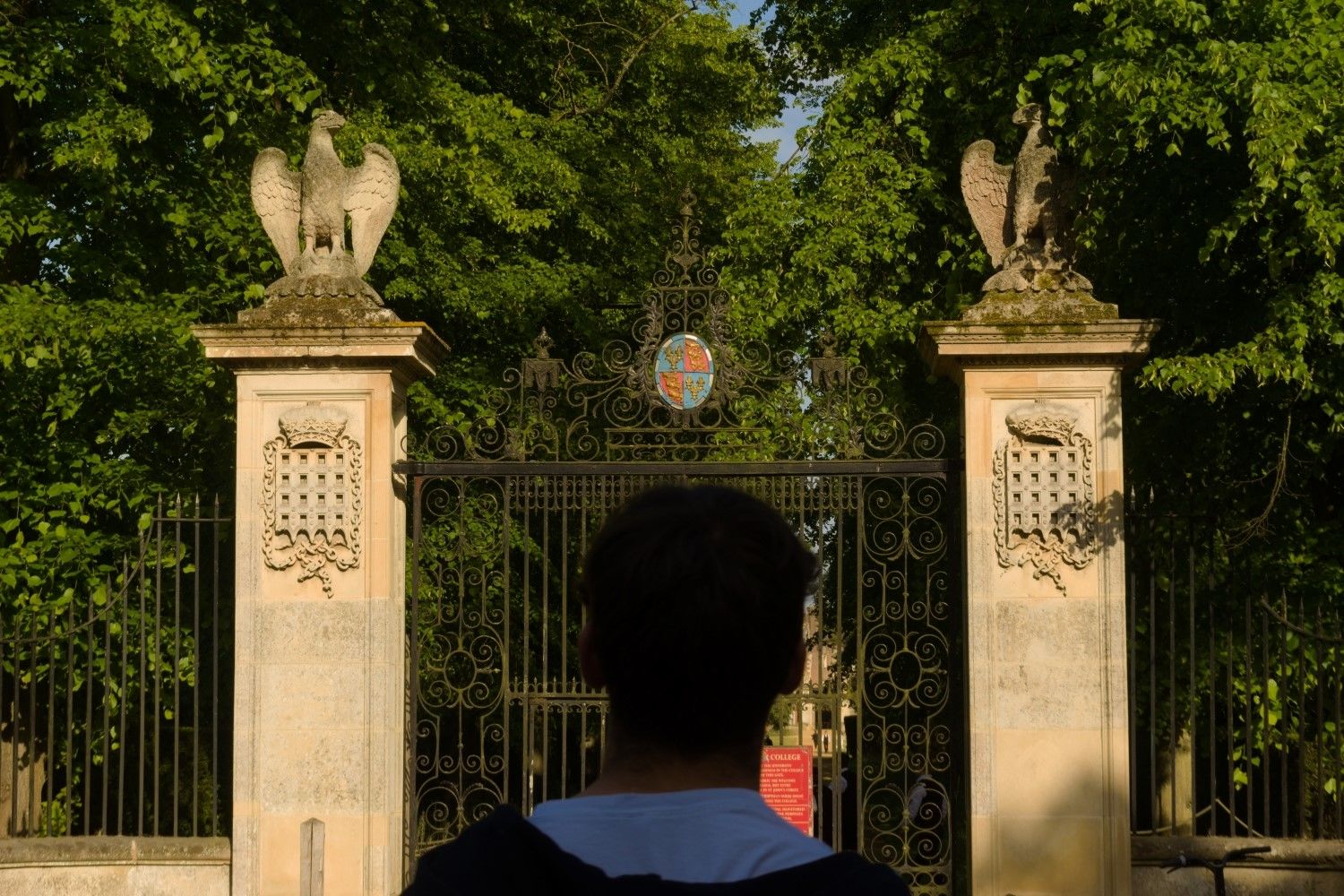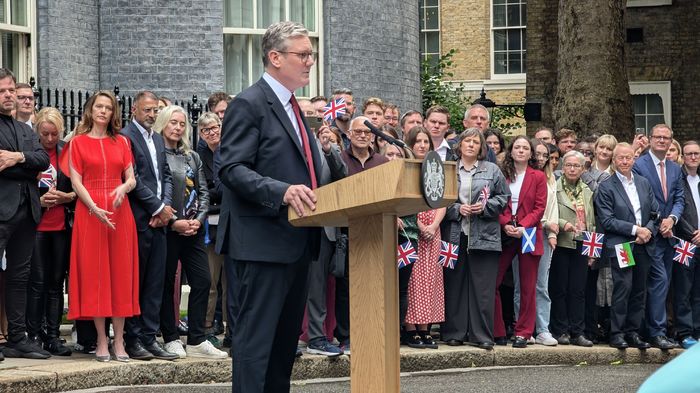In 1954 Nicholas Pevsner announced that he could “walk through Cambridge for a whole mile without being hurt by the sight of a single building.” Pevsner described the “ease and freedom” of navigating Senate House and the “narrow spiral staircase” of the University Centre. Reviewers praised his guide to England’s buildings for being such a “triumph of scholarship” that “no student … should travel in England without finding room for [the book] in his luggage.”
I came across Pevsner’s paean before moving to Cambridge. I remember flicking through the eerie black and white photographs of the city, struggling to imagine how the space actually felt. Since moving here, I have appreciated his description of Cambridge as “more beautiful than any [university] in America” and like him, loaf about in the “exquisite gardens” of the colleges. Yet, I have also questioned who these spaces are for, if not for that male student travelling to England with a copy of Pevsner stuffed into his luggage.
A few months ago, Cambridge was ranked the worst university in the country for disability support. According to research conducted by Disabled Students UK (DSUK), only 26% of students felt that they had adequate support, while more than a third had been made to feel “unwelcome” by staff due to their disability. Findings like these sit alongside the city’s “woefully inadequate” provision of disabled toilets and bus services previously described as “the most unreliable in the country”.
“Cambridge’s built environment privileges certain bodies over others”
Rosie Hunt, co-chair of the Disabled Staff Network, said Cambridge’s built environment privileges certain bodies over others. Rosie described how the “irrational geography of the city,” with its “medieval centre” and cobbled streets made it a place which was built “out of a sense of exclusion”.
Rhiannon Barton, disabilities and mental health officer at Emmanuel College, agreed with this diagnosis, noting that half of Emmanuel is cobbled and impossible for wheelchair-users to navigate. Rhiannon described how a recent supervision at Corpus Christi College involved climbing Pevsnerian stone staircases without warning.
Others with sensory issues mentioned the “torture” of hot-desking in University offices. Rosie mentioned colleagues who had arrived at lecture halls only to be unable to use them. Ria, an undergraduate who is deaf, described not having a suitable fire alarm in their college until halfway through their degree and the “contradiction” of finding the Sign Language Society was hosted in the inaccessible and raucous Grain and Hop Store.
While everyone I spoke to recognised the importance of the city’s heritage, Rosie argued that “[disabled people] are [always] second to the building”. Rhiannon noted that the influx of tourists in the summer left some disabled students “locked in [their college]”. One interviewee claimed: “I always knew I had a disability, but it was not until I came to Cambridge that I realised I was disabled”.
Most agreed that the dis-abling nature of the built environment stems from chronic “ignorance” rather than prejudice. Last year, the Centre for Teaching and Learning updated its guidance to stipulate that lecture recordings would only act as “a supplement” to improve “learning experience”. Occasionally, ignorance slipped into prejudice – with Ria recalling one lecturer who told them “this lecture’s being recorded for your benefit only”.
“I always knew I had a disability, but it was not until I came to Cambridge that I realised I was disabled”
These issues extend beyond college walls. Despite a 2020 Varsity investigation calling for “clear guidance” on access arrangements, finding that 56.6% of students with disabilities felt they “missed out” on social events, this year’s “Access-a-Ball Scheme” was criticised for neglect, having launched only in late Lent Term—months after May Ball planning began. My research found that of 32 public toilets in Cambridge, only four were accessible. Accessible toilets at Gonville Place not only required 20p to operate, but were all out of order. When I tried ringing the helpdesk, I found a message saying that the line was no longer in use.
Part of what makes the 2024 DSUK report important is that it focuses on the way disabled students “felt”. Many disabilities are not visible. It is worth noting the feelings of fatigue, isolation and weakness that constant self-advocacy requires. It was these “overwhelming feelings” and their “emotional toll,” Ria told me, that left them feeling “isolated”. They said that disabled students end up not “liking socialising…because it’s so inaccessible”.
Rhiannon agreed, noting that engaging in Fresher’s Week as a student with disabilities required “a lot more effort” and recognised that feelings of “embarrassment” hindered participation. Rosie noted the emotional toll of occupying spaces which did not feel they were designed for you. She described the “administrative burden of disability,” how much extra paperwork is involved “just to get access to your rights”. A PhD student said, “[you are] treated like a problem if you ask [for help] more than twice, but […] don’t get it unless you ask four times”. “What you learn, as a disabled student at Cambridge”, Rhiannon summarised, “is no one else is going to check things for you.”
Rhiannon admitted that although she “would love to say that [she’s] on a mission to make college more accessible…it’s just not possible in most areas”. Her comments sit alongside the news that the Accessibility and Disability Resource Centre (ADRC) has one of the highest caseloads in the Russell Group and has controversially cut funding for ADHD and autism diagnoses. Given that Cambridge is the wealthiest university in the country, I wonder whether its problem with accessibility is less a question of capital, and more of political will.
“Given that Cambridge is the wealthiest university in the country, I wonder whether its problem with accessibility is less a question of capital, and more of political will”
When I asked what spatial changes my interviewees would like to see, all of them mentioned “flexibility”. Ria called for spaces which could “suit different kinds of needs”, Rhiannon mentioned her ambition to get a “quiet room” installed so that “people who are experiencing anything can go there”. Rosie described the “world of difference” recordings and subtitles made. She also called for more attempts to give people with disabilities “space to speak” and listening to them. Another student described how so much of being a person with disabilities in Cambridge and modern Britain generally, is the experience of “being spoken for.”
Disability activist and educator Jos Boys calls for us to consider space from the starting point of “difference”. “Starting from difference” opens up a range of creative possibilities for how we might think about space in ways that are energising rather than stultifying. Towards the end of our conversation, Rosie described the “joy” of running a panel discussion in November where the voices of disabled workers were put to pro-vice-chancellors and heads of department. Having librarians, administrators and researchers communicate their experience was “one of the things I’m most proud of,” she explained.
Building and rebuilding our spaces from the perspective of difference and flexibility does not have to be a burden. It can open up new ways of moving and being in the world and diversify communities. Given that 23% of students in Cambridge have disclosed a disability to ADRC, I’m also hesitant to describe building accessibility as a place of “difference” altogether.
Pevsner’s remark that he “was not hurt by the sight of a single building” may have been light-hearted, but he draws our attention to something structural. Our built environment can be a violent place, delineating not just who can participate in student life, but also the emotional cost of doing so. Thinking about space from the perspective of flexibility and difference offers the possibility of shining a light on both conscious and unconscious forms of discrimination. It also better aligns Cambridge’s medieval built environment with its twenty-first-century values.


